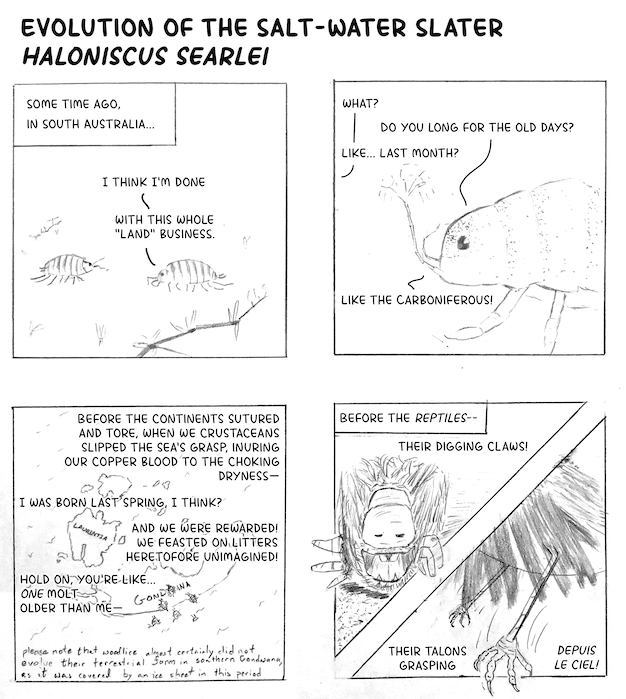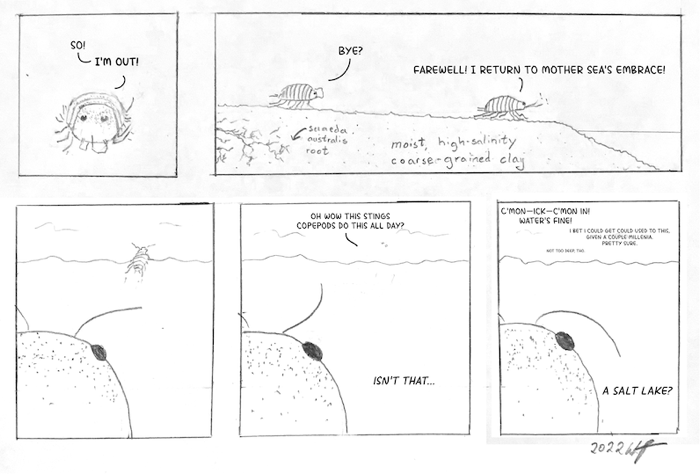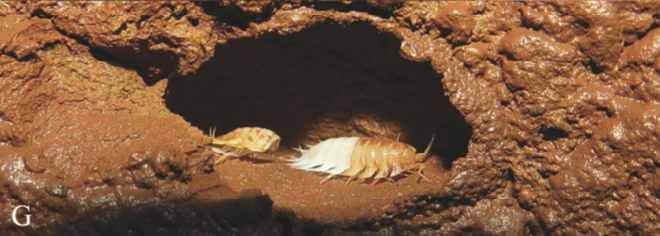
Issue №1: Evolution of the Salt-Water Slater
by W.L.


transcript
Haloniscus searlei! The salt-lake slater! Woodlice/pillbugs/oniscoids appear to have actually re-evolved the capacity for aquatic life multiple times, though this species (and a few very close relatives) was the only one I could find that re-evolved for aquatic life not in a cave. It seems that once you've adapted to cave life you may well adapt to cave pool life, and many more species of oniscoid have adapted to semi-aquatic lifestyles--like Brazil's Iuiuniscus iuiuensis, which build simple shelters out of clay (Souza, Ferreira, and Senna 2015).

The “digging claws” in panel 4 belong to the southern marsupial mole or itjaritjari, Australia’s own convergently-evolved niche-equivalent of the other continents' moles. Check out its shovel-like fore-toes! The marsupial mole of today is primarily a reclusive resident of the desert, and so would meet relatively few moisture-dependent woodlice--so let’s conjecture that in this particular piece of pre-history, the forerunners of the modern marsupial moles were more ecumenical in habitat. The talons, meanwhile, belong to some sort of generic finch.
Suaeda australis, or seablite, is a low salt-marsh succulent bush. You can eat the leaves.
Though I assume producing this adaptation took quite some time, today’s salt-lake slaters are the toughest oniscoids on Earth when it comes to salt--they can thrive in lakes where the salinity exceeds 150 grams salt/kilogram of water, compared with the 35 g/kg of sea water, and have been found surviving in lakes at nearly 200 g/kg (W.D. Williams 1983). They can’t quite compare with the 240+ tolerance exhibited by their distant crustacean cousin the brine shrimp--but not bad for a pillbug!
The font is “Bean Burrito” by Sara Linsley.
